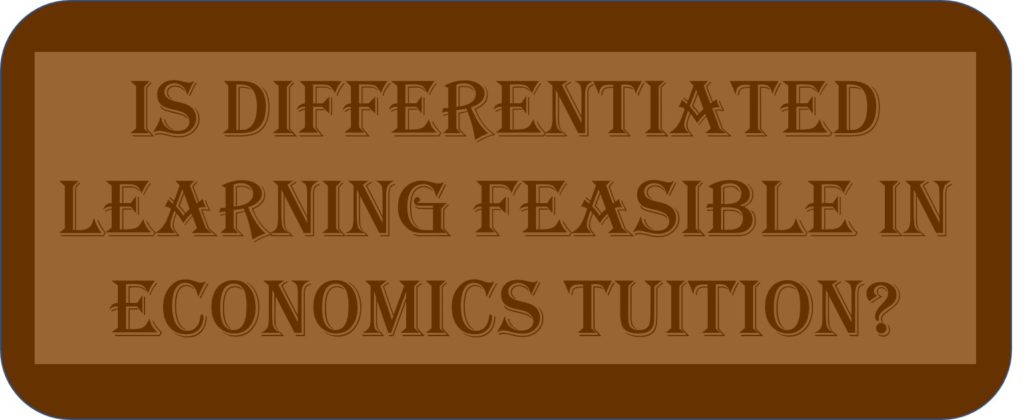Is Differentiated Learning Feasible In Economics Tuition?
Everyone was born without knowledge. In the process of growing up, the process of maturing and the process of aging, they acquire knowledge. In this sense, everyone is a learner. However, no all learners have the same calibre. Some learners are fast but others are less so. This difference has given rise to the concept of differentiated learning. Differentiated learning has been touted as a breakthrough in classroom learning. Even some providers of economics tuition are contemplating differentiated learning in their classrooms. Economics Cafe Learning Centre which is a renowned economics tuition centre in Singapore, for example, has been studying the feasibility of differentiated learning in its economics tuition classes. The question is, is differentiated learning feasible in economic tuition?
Mix Of Students
Singapore has 21 government and government-aided schools providing the Singapore-Cambridge GCE ‘A’ Level Economics. The best among them is arguably Raffles Institution and the worst is arguably Millennia Institute. However, many of the students go to the same tuition centres for economics tuition. The result is a mix of students, some with high calibre and some with low calibre. This poses a challenge for some economics tutors. For example, the Principal Economics Tutor at Economics Cafe Learning Centre, Mr Edmund Quek, has to constantly adjust his speed of teaching and the style of delivery of content knowledge from class to class. This has helped him produce a large number of ‘A’ students every year. However, in order to further increase the distinction rate, which is one of the highest in Singapore, the economics tuition centre is exploring the possibility of implementing differentiated learning in the classroom.
Differentiated Learning
Differentiated learning refers to the concept of teaching which involves providing different students in the same classroom with different avenues to learn, regardless of differences in ability. To put it simply, students in an economics tuition classroom are divided into groups with students in the same group having similar ability levels. Each group of students is taught at a different pace, with the group of students with high ability levels being taught at the faster pace and the group of students with low ability levels being taught at the slower pace. However, differentiated learning is more than simply teaching students with different ability levels at different paces. The style of delivery of content knowledge also varies from group to group. Students in the group with medium ability levels will be imparted the content knowledge in the way which is prescribed in the syllabus. Students in the group with high ability levels will be imparted the content knowledge in a way which is more challenging. This is often done through using more complex examples to help the students achieve a higher level of understanding of the subject. Students in the group with low ability levels will be imparted the content knowledge in a way which is more simplistic and this can be done through using simpler examples to help the students more easily understand the subject.
Feasibility Of Differentiated Learning In Economics Tuition
There are several conditions which are useful for implementing differentiated learning in economics tuition, namely space and time. There needs to be sufficient space in the classroom for the economics tutor to be able to divide students into groups with students in the same group having similar ability levels. This is essential as group discussion often takes place in such a classroom setting. Such a classroom setting also requires the economics tutor to extend the hours for economics tuition. Instead of the normal two hours per lesson, the duration of each lesson should be extended to at least three hours, in my opinion. This is to ensure that the economics tutor has adequate contact time with every group.
Benjamin Tay
Economics Tuition Singapore @ Economics Cafe
Principal Economics Tutor: Mr. Edmund Quek


